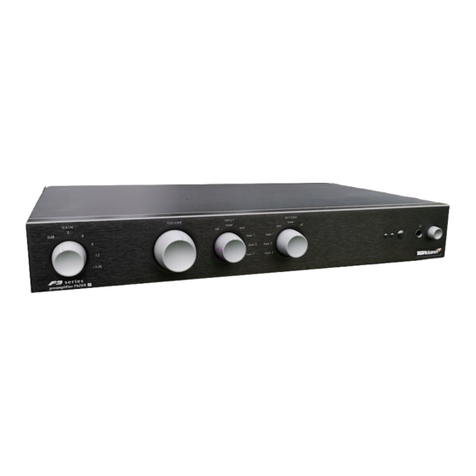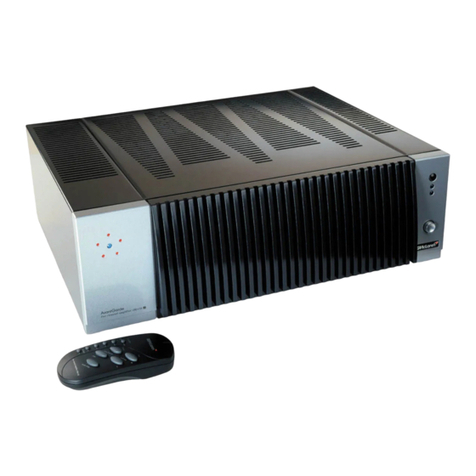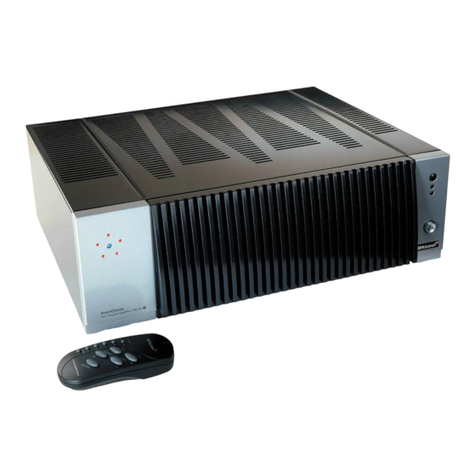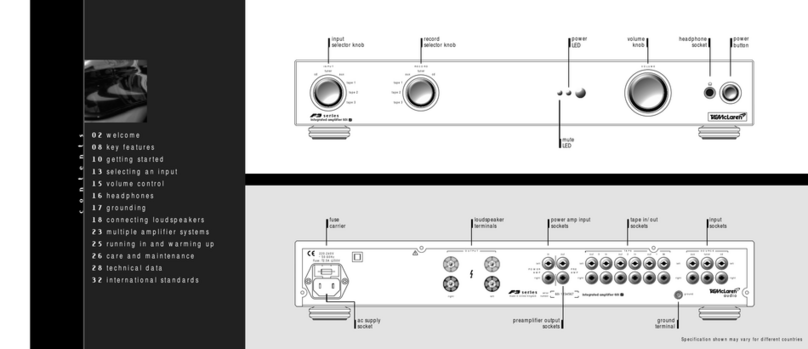We are convinced it will give you many hours o
listening pleasure.
The PPA20 is dedicated to those who want to get the very
best out of their vinyl records. It can accept the output of two
turntables and includes the capability to fine tune the signals
of both independently.The PPA20 also has switchable filters
to enhance your enjoyment of older records which may be
damaged or were recorded using non-standard equalisation.
RIAA / IEC requency response
The frequency response of the PPA20 meets
the RIAA specification,and a switchable low-
frequency (‘rumble’) filter is included which
meets the IEC specification.An additional
switchable bandpass filter allows you to
remove noise at both low and high
frequencies and a facility is also provided
to select mono reproduction.
low intermodulation distortion
The theoretically-ideal preamplifier
reproduces sound perfectly over an infinite
range of frequencies – starting from well
below the audible range and extending far
above the capabilities of human hearing.
Although sound outside the human hearing
range of approximately 20 to 20,000 Hz
cannot be heard,it can significantly affect
the quality of music reproduction through
welcome welcome
0504
Thank you for purchasing theTAG McLarenAudio phono preamplifier PPA20.
an effect that audio engineers call
‘intermodulation distortion’.This type
of distortion moves imperfections that
originate outside the hearing range back
into the audible frequencies.To minimise
this effect,TAG McLarenAudio
preamplifiers have a frequency response
which extends both above and below the
range of normal human hearing.
straight line technology
To prevent intermodulation distortion,
a preamplifier must respond to very low
frequencies but block any Direct Current
(DC).This is traditionally achieved using
capacitors, which also block some of the
low-frequency signal.In the PPA20,
a feedback circuit eliminates DC offset
voltage and allows the signal path to be
direct coupled without any capacitors.









































